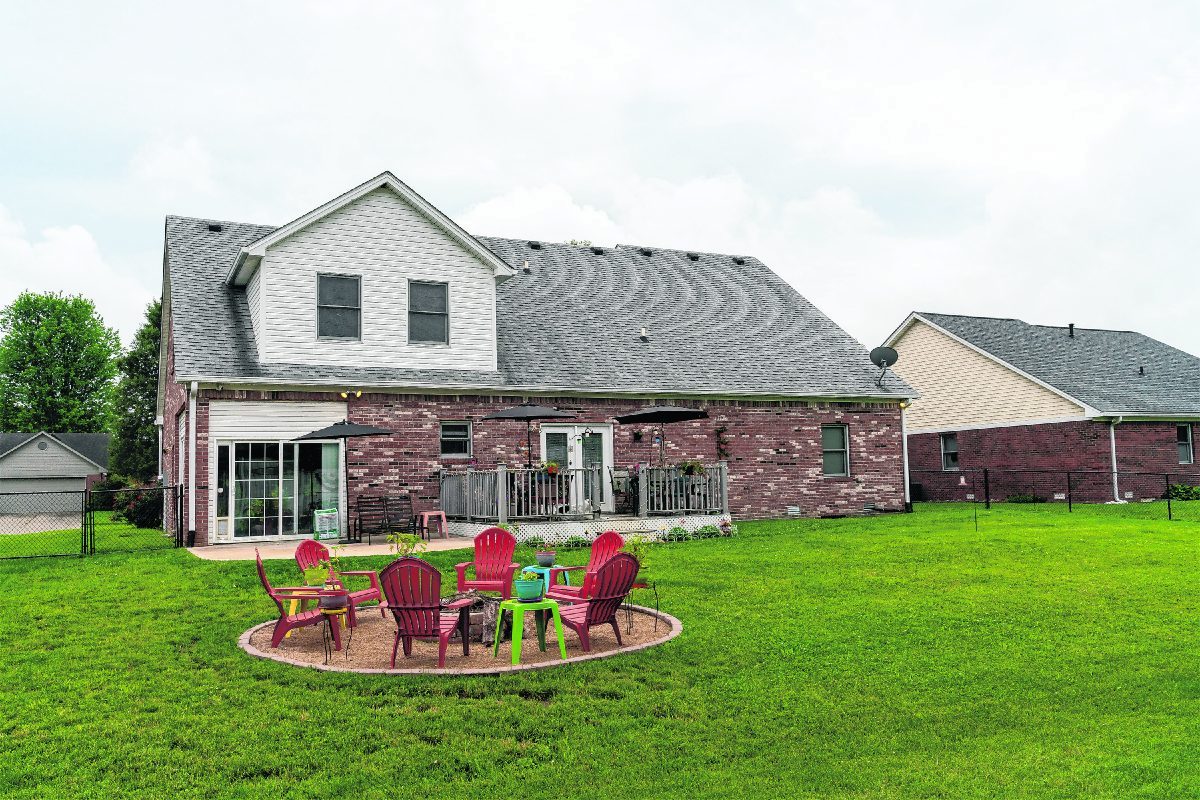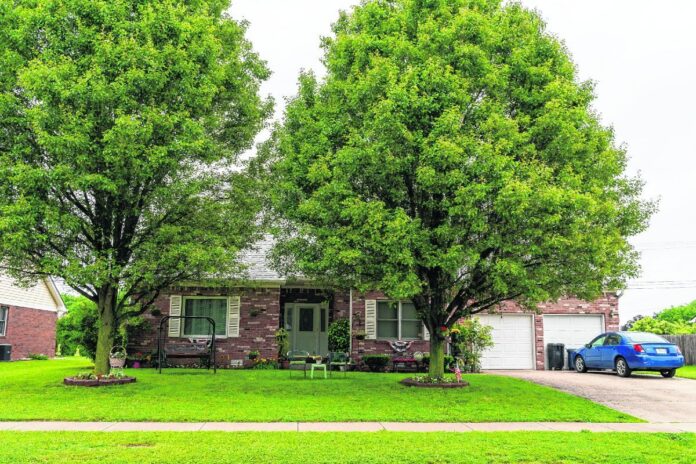
A Franklin homeowner’s assessed value increased by nearly $64,000 in the last five years.
When Carma Barnes bought her home in 2016 in Jefferson Meadows, it was assessed at less than $230,000. Now, it is worth nearly $293,000, and her property tax bill reflects that. She saw the biggest jumps in assessed value in 2018, then again this year.
Some of the larger homes in her neighborhood have had more moderate increases to the point that her home is now worth almost as much, according to online property records.
That’s why Barnes filed an appeal to the Johnson County Property Tax Assessment Board of Appeals (PTABOA).
“I’m not against paying my fair share of taxes at all, but when I looked into it I thought, ‘this doesn’t seem right,’” Barnes said.
Barnes is not alone. Many county residents have asked county officials, their neighbors and social media friends what the deal is with their assessed values.
Nearly 450 single-family homes in six of the county’s nine townships saw an annual assessed value increase between 30% and 80%, according to data from the Johnson County Assessor’s Office. Homes in Clark, Hensley and Nineveh townships saw more moderate increases, or it stayed the same.
In White River Township, similar increases were seen by more than 373 homeowners, including 98 in unincorporated Johnson County and 54 in the Town of Bargersville. An additional 18 homeowners in the Union Township part of Bargersville saw increases of 30-80%.
In Greenwood, 106 single-family homeowners saw their assessed values increase in that range, including 70 in the Greenwood school district and 36 in the Clark-Pleasant school district.
In Franklin, 83 homeowners saw the 30 -80% assessed value jump, including 70 in Franklin Township and 10 in Needham Township.
About 25 homes in Whiteland and 31 homes in Edinburgh also saw the 30-80% increase.
The assessed value increases are due to the competitive housing market, which is driving up prices.
Homes in the coveted $200,000 to $350,000 price range have skyrocketed to the point that many are paying over asking price due to low housing supply in desirable locations throughout Johnson County and Central Indiana, according to local sales data.
Property taxes are calculated on market-determined assessed value and local government finance, both of which fluctuate year to year, according to the Indiana Department of Local Government Finance.
In Johnson County, where low to moderately priced houses sell within hours of being listed, that competitive housing market is the main reason assessed values keep going up, said Mark Alexander, county assessor.
Since 2002, county assessors have been completing detailed annual market analyses that determine the median selling price in each township and neighborhood. A trending factor is determined based on area sales, and that factor is used to calculate what the home is worth at that moment in time, Alexander said.
For taxes due this year, Alexander and his team used sales data from 2019, as assessed value is calculated based on data collected during the previous year. Using Barnes’s home as an example, homes priced at $257,000 sold for more, which resulted in an increase of $35,400 based on the trending factor.

Assessed value also increases or decreases based on construction or demolition of accessory structures such as a shed, garage or deck, Alexander said. The assessor’s office keeps an eye on permits issued by cities, towns and the county, and updates a home’s value accordingly.
The local housing market has resulted in considerable assessed value increases since about 2017, he said. That is likely to escalate further as the home supply shortage was worsened by the pandemic and building material shortages continue.
Specifically, sale prices for three- to four-bedroom and two- to three-bathroom homes have steadily increased countywide since 2017, Alexander said.
The number of homes listed that were built in the 1950s through the 1990s has also steadily increased since then. Even homes of that age are selling for more if they are in a popular price range and desirable neighborhood, he said.
Some homes haven’t changed a lot in value or only change every few years, as the market is not volatile at all price points or in all neighborhoods. Typically, in years with larger jumps, more homes had a change in ownership the previous year, Alexander said.
Though assessed values changed dramatically for many, the assessor’s office received fewer appeals this year than last. Nearly 200 appeals were filed for the 2020 pay 2021 assessment date, and 62 appeals have been filed so far for the 2021 pay 2022 assessment date, county assessor’s office data shows.
Alexander encourages anyone who is concerned about their assessment to reach out with questions or file an appeal.
Property tax appeals on the 2021 assessment can still be made until Tuesday. Each year, taxpayers get a two-month window to file an appeal.
The assessor’s office is willing to share data used in the study of the homeowners’ neighborhood, help homeowners understand the calculation and double check every appeal to ensure the assessments are fair, Alexander said.
“I stress to the public that you get to participate in the process, whereas when you pay your income tax you don’t,” Alexander said. “We get kind of a bad reputation as a tax collector … but we try to help them.”
[sc:pullout-title pullout-title=”At a glance” ][sc:pullout-text-begin]
How annual adjustments work for 2020 assessments payable in 2021
1) The assessor examines sales from calendar year 2019.
2) The assessor compares the 2019 sales information to the assessed valuation for 2020.
3) The assessor adjusts the 2020 payable 2021 assessment by a factor created using the 2019 sales.
Source: Indiana Department of Local Government Finance
[sc:pullout-text-end]





